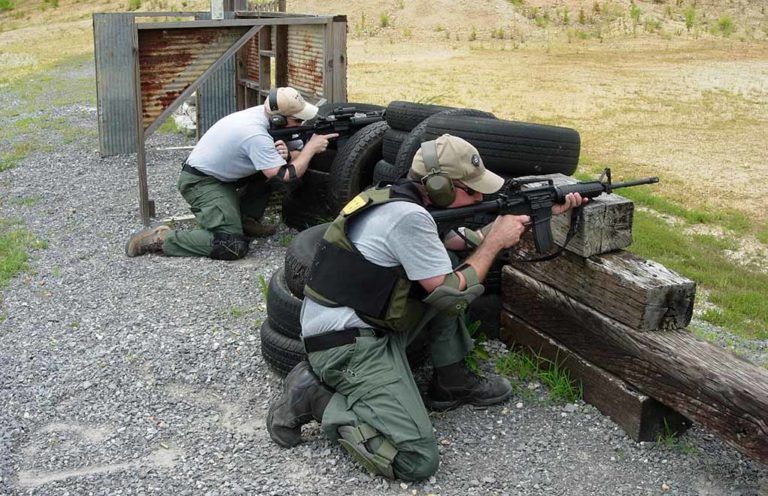
Application of AR-15 fundamentals must occur subconsciously, freeing up the mind to make bigger decisions.
What Are The AR-15 Fundamentals You Need To Focus On:
- Safety
- Accuracy
- Manipulation
- Working The Charging Handle
- Operating The Bolt Catch
- Learning Your New Equipment
Safety
Ask someone what the “fundamentals” of firearms are and you’ll get a variety of answers, and usually multiple responses from one person. There’s obviously safety to consider. Your primary focus whenever handling firearms, regardless of the reason, is safety. This, as you know, is the foundation of all other fundamentals.
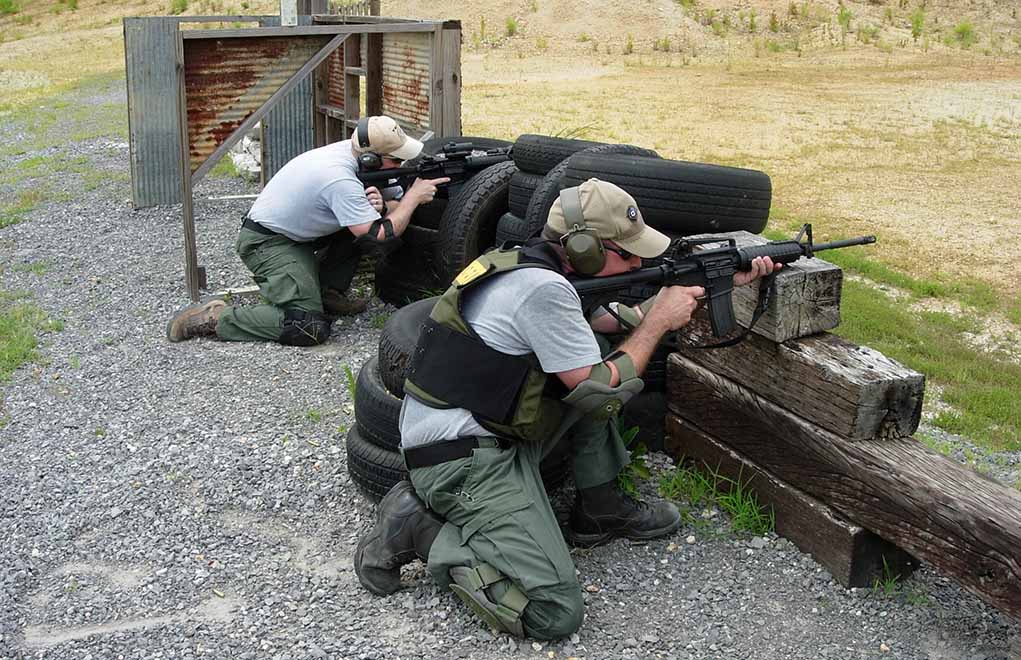
Accuracy
Then there’s the fundamentals of marksmanship, though this is a skill set no one ever masters. I can tell you that — backed by more than 25 years of teaching and decades of personal experience — the one problem we all have, at least occasionally, is shooting too fast.
“But,” you say, “In the match/field/fight I need to shoot fast.” The purpose of shooting is to hit the target; accuracy is first and foremost. The speed you shoot is dictated by distance and size of the target. Bad shots or misses most often indicate that you fired too fast. The fundamentals (aim, hold, press and follow-through) apply for each and every shot, thus ensuring hits.
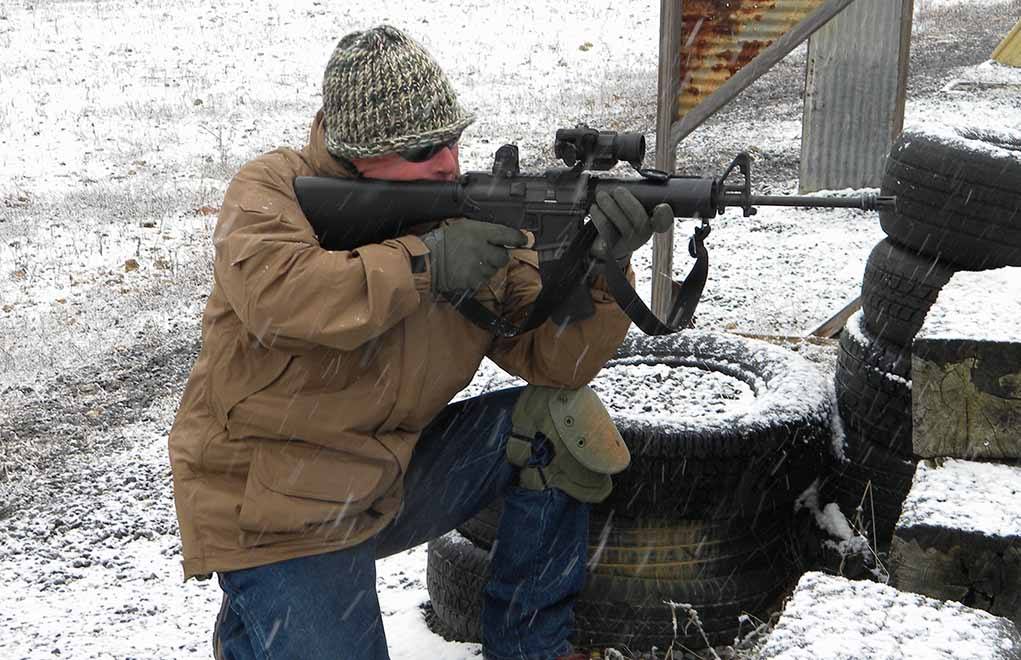
Marksmanship excellence is achieved through thousands of rounds on the range, backed up with exponentially more dry practice. You fire one accurate shot, taking all the time needed to ensure each shot is done “right.” After one hit, you stop, reset everything physically and mentally, and start over. One shot at a time — a slow, methodical process.
Get On Target With More AR-15 Knowledge
- Buyer's Guide to the Best AR-15 Rifles for Any Budget
- AR-15 vs AR-10 – How Stoner’s Rifles Stack Up
- Best AR-15 Parts & Accessories
- Building an AR-15 Lower Receiver – Putting The Internals Together
- AR-15 Upper Receiver – How it Works
- AR Pistol Brace Buyer's Guide
- Best AR Pistols – Affordable Options
- Best Calibers for AR-15 Rifles
Once you can hit any target — within reason, of course — you begin to think about making two hits. Regardless of the number of shots, it’s about repeatedly applying the four fundamentals. The fundamentals, after all, ensure good hits, almost effortlessly, during the match/hunt/fight.
Manipulation
The ability to properly manipulate the AR is another fundamental skill — and it takes more resolution than any skill. The only way to learn this is through repetition, but it’s necessary because the AR is more complicated than some firearms, especially pistols. ARs have many advantages over a handgun: accuracy, magazine capacity, extended range and terminal ballistics — and limited penetration. To become proficient in manipulating the AR (which means safely and efficiently) requires resolution, because the definition of “repetition” is boring.
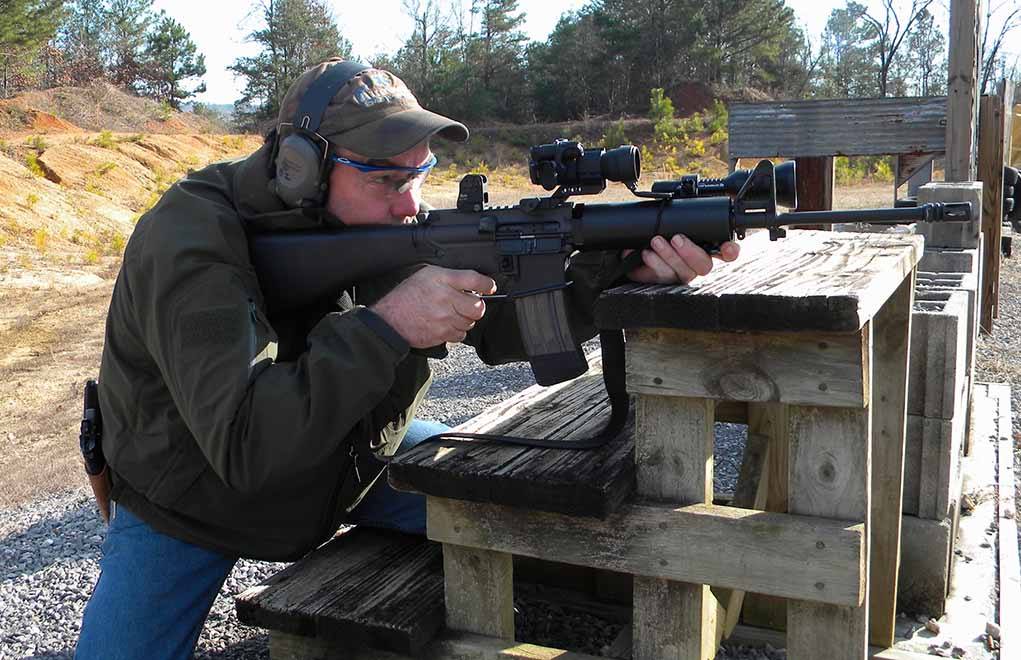
Learning how to load, unload or confirm the status of the AR — what I call administrative manipulations — and clear stoppages or malfunctions — functional manipulations — starts with learning how to properly cycle the charging handle.
Working The Charging Handle
Working the charging handle is a fundamental all by itself. It’s a three-step sequence, and it starts by positioning the thumb on the back of the handle in the center. Properly positioning the thumb here provides a good purchase, and it helps ensure you don’t twist or torque the handle as it’s racked rearward. Next, use your first finger to unlatch the handle. Failure to do so will either cause your hand to jerk off the handle without cycling it, or I’ve seen really strong guys rip the latch off the handle.
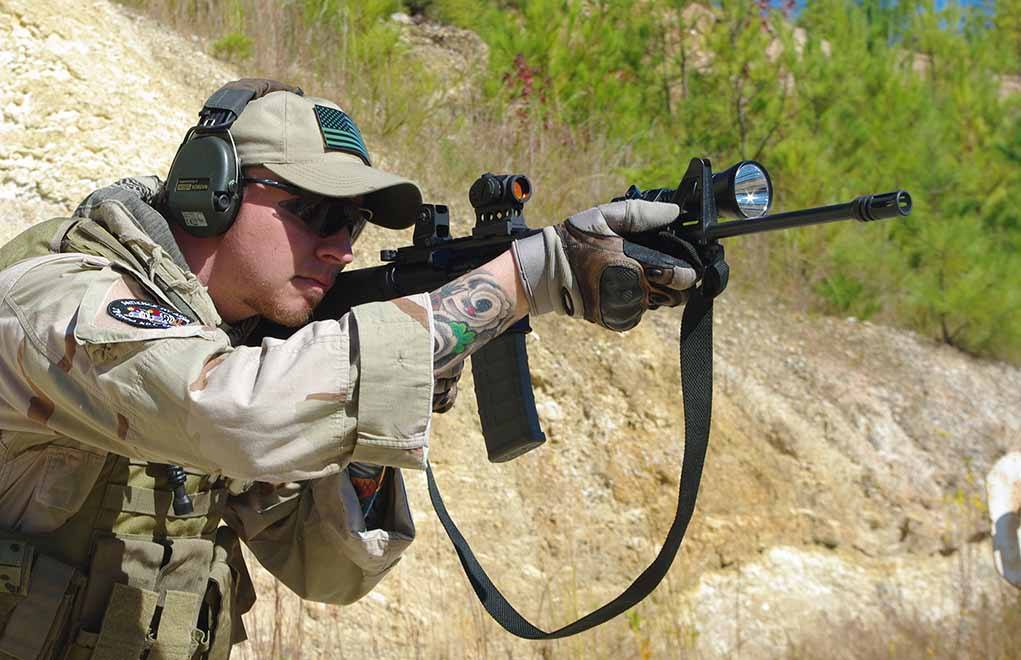
Pull the handle straight back, with your thumb following the centerline of the stock rearward. The physical action to cycle should occur in your elbow — not the shoulder — making sure you don’t twist the handle. “Twisting” creates friction, wear or bending the handle out of shape, locking up your AR’s action. Finally, once the handle reaches full extension to the rear, you release it, making sure your hand doesn’t impede the bolt’s forward motion.
Operating The Bolt Catch
Reloading is another functional manipulation. During reloads, when the bolt is locked to the rear, use the bolt catch as a release to chamber a round instead of manually cycling the charging handle. This is how the AR is designed to function.
Using the bolt catch to chamber a round is much more ergonomic than cycling the handle, and the more you mess with that handle the more likely is it that you’re going to mess it up, like letting your hand ride the handle forward, retarding the action and creating a stoppage. The fundamentals of manipulating the AR are about details, and the small ones make a big difference.
Learning Your New Equipment
Maybe your AR goal for 2019 is a new piece of equipment. You’ve had your eye on a new optic, a different caliber, or a brand new rifle, carbine or pistol. Now it’s time to buy, and again, the fundamentals are important.
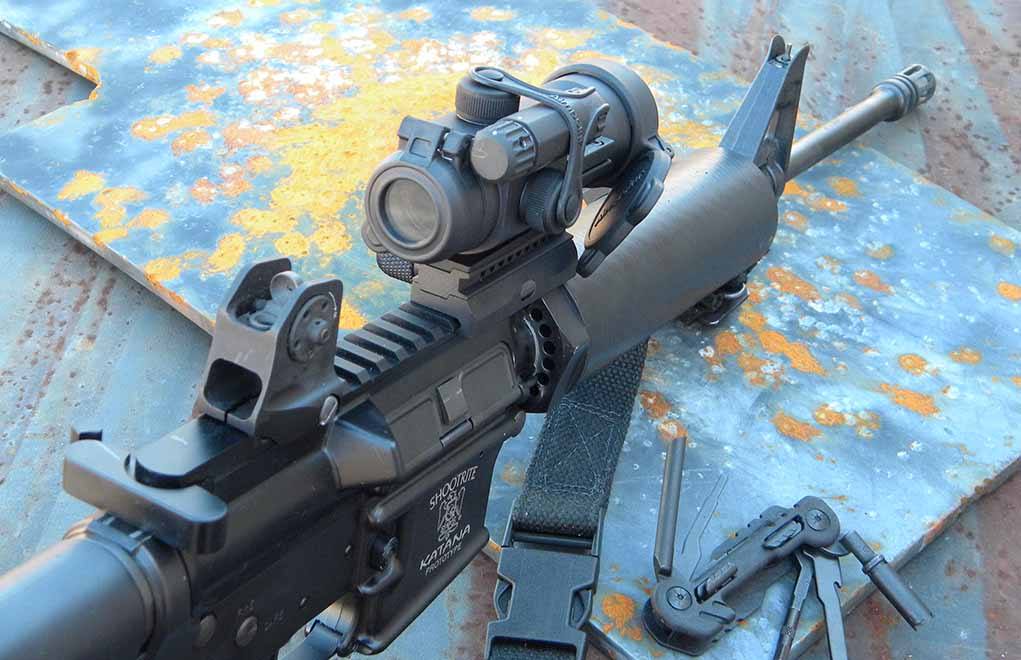
The first thing to do with new gear is read the instructions. I know — I can hear you groaning — but this is fundamentally important. Familiarization is fundamental; not knowing how something works severely limits your ability to use it well. I’ve seen people send a lot of expensive match-grade ammo downrange before discovering something was off. If for no other reason, read the manual to get the most out of your new purchase. And remember: If your marksmanship fundamentals aren’t up to speed, you won’t be pleased with your skills or your new investment.
Parting Shot
Working with the AR — for plinking, protection, shooting for competition or putting game on the table — is always about the fundamentals. In a defensive encounter, fundamentals are literally life and death. The fundamentals like safety, manipulations, accuracy — which includes different firing positions, shooting from cover and engaging a moving target — and the ability to use your gear efficiently must be over-learned.
Application of these skills must occur at a subconscious level. This frees up the conscious mind, which can only think about one thing at a time, to focus on the bigger decisions. Ultimately, what you’re striving for is efficiency; this will make you quick and provide the results you need.
Make a resolution now to get these fundamentals squared away. It’ll be too late to learn when you really need them.
Editor's Note: This article originally appeared in the January 2019 issue of Gun Digest the Magazine.

Next Step: Get your FREE Printable Target Pack
Enhance your shooting precision with our 62 MOA Targets, perfect for rifles and handguns. Crafted in collaboration with Storm Tactical for accuracy and versatility.
Subscribe to the Gun Digest email newsletter and get your downloadable target pack sent straight to your inbox. Stay updated with the latest firearms info in the industry.

![Best Concealed Carry Guns In 2025 [Field Tested] Wilson Combat EDC X9S 1](https://gundigest.com/wp-content/uploads/Wilson-Combat-EDC-X9S-1-324x160.jpg)


![Best 9mm Carbine: Affordable PCCs [Tested] Ruger Carbine Shooting](https://gundigest.com/wp-content/uploads/Ruger-Carbine-Shooting-100x70.jpg)
![Best AR-15: Top Options Available Today [Field Tested] Harrington and Richardson PSA XM177E2 feature](https://gundigest.com/wp-content/uploads/Harrington-and-Richardson-PSA-XM177E2-feature-100x70.jpg)
